When Icon came out of the ground in 2008, it proposed the A5, a sporty amphibious light sport airplane that would appeal to motor- and extreme-sports enthusiasts. But the company struggled with a long developmental period and serial production has been slow to materialize. In July 2019, with investment flagging, the company announced a major reorganization, downsizing its workforce by 40 percent and cutting production to fewer than five aircraft a month. In this two-part report, we interviewed Icon CEO Thomas Wieners, examined the company’s training program and took a trial flight in a recent-model A5.
Is the market focus for Icon still non-pilots who are motorsports and extreme sports enthusiasts or people already in aviation?
We’re actually targeting both. But the intent was to target both pilots and non-aviation background enthusiasts. And that’s still the plan. To be honest with you, we actually see more pilots going through the training. We’re seeing that it really takes time to create that new category. We’re still confident that we’re getting more and more folks excited about it. My background is automotive and power sports and I’m going through the private pilot training myself. This is really creating a new market segment where one doesn’t exist now.
How are you finding sales prospects?
The way the airplane was designed was to allow … not moving from point A to point B, but instead to have a pusher configuration so no prop is in front of you, so you have that wide-open cockpit. So you basically see 360 degrees out. You take the windows out.
So the idea here is getting power sports and outdoor enthusiasts into the airplane and giving them the opportunity to explore the planet three dimensionally. And that’s been successful.
We’re trying to have the airplane speak for itself. We’re trying to have as many demos as we can to see what the airplane can do and what you can do with it.
But how do you attract such buyers?
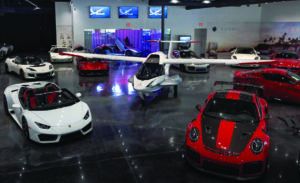
Miami is a good example. We’re partnering up with the biggest Lamborghini dealer in the United States. We’re displaying our aircraft on his floor. So people come in and look and shop cars say, wow, there’s a plane here that has the same price tag as a Lamborghini, why not try this one? We had a sales event with Tesla, for example. Or Porsche. So we’re trying to go a few different routes so we’re not only addressing folks coming out of an aviation background.
What we’re looking for is surprise interest, like “whoa, what’s the airplane doing here? Pretty cool. And I actually could afford it. Because I can afford a Lamborghini, and I’d like an airplane as well.” So we’re able to get a foot in the door with exciting sport aircraft. And that’s what we want to do. And that’s actually happening through these events or partnerships.
What has the uptake been on these efforts?
My best guess at this point in time is that we’re getting 20, 30 or 40 demos out of that appearance on the shop floor over the period of a quarter, I’d say. We have a sales representative on the floor and ask if the customers want to try it. That’s what we’re trying to do and it works fairly well.
What’s the sales conversion rate on these demo flights?
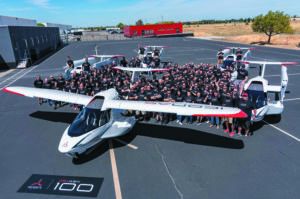
That’s hard to translate. We are fully aware that creating that new category and convincing someone who has not thought about buying an airplane to buy one, that’s a long cycle. Right now, what we’re trying to do is feed the funnel to create as many hot leads as we possibly can. It’s our task to convert these into contracts. We’re aware you have to be patient. You’re not selling big numbers. You’re not converting in a heartbeat big numbers of people who weren’t even thinking about it. Our idea is that we let the plane speak for itself.
We have regional sales directors. They’re all equipped with a plane, with a trailer, with a towing vehicle and meeting the prospect at his FBO of choice. We’re trying to be as flexible as we possibly can be.
By traditional aviation standards, that’s aggressive selling to cold prospects.
Yes, but we think it’s necessary. It’s also trying to control costs. You don’t want to go and have brick and mortar in too many areas when you’re not knowing where you’ll find your prospects. We’re trying to be in a few locations very aggressively, but then in parallel be flexible and say, look, we’re going to meet you wherever you are.
Who have the buyers been so far?
I’d say it’s still 70 percent-plus pilots or people who have been flying before and are renewing their license. Or changing from one plane to another. Around 30 percent are novices and are new to the game and starting to enjoy that exciting adventure.
Do you have to reverse that ratio or does it matter?
Bottom line, it doesn’t matter. We’re trying to interest both. We believe we can do better on the non-pilot side, but we’re aware that it will take longer.
When Icon first came out of the ground, the volume expectations were not just high by LSA standards, but by any standards. Was that unreasonable?
I call it extremely visionary and ambitious. What you’re seeing is that we’re correcting this with the reality that has kicked in. It’s totally OK that the vision was assuming this. This allowed us to come up with the product as it is in the end.
But I think it’s now our responsibility to adjust. And that’s what we’ve been doing, right sizing the organization that was laid out spec’d for high volume to what is and [will be] smart and healthy growth from that base.
If you look ahead two to three years, what kind of volume do think is realistic?
So a very healthy volume for us is 250-plus. That would be the starting point. I actually hope and think it can be higher. Will it be thousands? I don’t think so. I certainly think it could be in the 250 to 500-plus level.
Obviously, the initial investment was scaled to much larger numbers. Can you now downshift it?
I think we can and that’s the reorganization we have just been initiating. Both of our facilities have a capacity of around 1000 aircraft a year. Now this is space and space translates into rent. We’re considering subleasing space and we’re considering taking on other projects that require space and would pay for themselves.
That’s a fairly easy exercise, I’d say. The other one is equipment and tooling. It’s highly capital intensive. We have tooling to support 250 units a year. The good news is we have the ability to scale up to 250 without needing more cash. At the same time, this is capital that has been invested, but is not fully utilized right now.
Are you capable of running the factories without additional capital input? And does this suggest you’re at the break-even point?
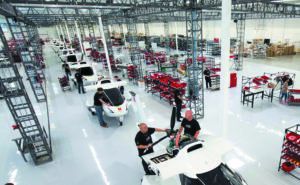
Yes we are. No, we’re not at the break-even point financially. Agreeing to the reorganization, you’ll understand, has been a painful decision for us. We had been hoping for higher volumes coming in quicker. But with the reorganization, we have set ourselves up for funding that has come in that will support us to execute this plan. It will attract future funding that will ideally take us to healthy volumes.
Are the investors OK with this? What are investor expectations?
These are long-term investors. The money that’s in is highly strategic investment for long-term return. If this was a quick investment for a quick return, we would not likely have the support we’re having. With the investment that’s already in, the investors have a lot of skin in the game and are highly committed.
When the aircraft first emerged, the price was estimated at $139,000, but now it’s $389,000. How has this impacted deposit conversions?
Obviously, it has been hurting. And this was the risk that the company took when it came out early with price tags at $139,000, $189,000, $259,000. At that point, the data was extremely weak about what it would cost to produce the aircraft. What will it take to bring it into serial production.
The company has been very optimistic and bullish that this could be done cheaper. Unfortunately, the airplane was not necessarily designed for manufacturability. The focus was on the flight characteristics and aesthetics of the airplane. So now, the deposit holder list is looking substantially different than it did before.
I would put this under the envelope of a reality check right now. It’s not so much about deposits. Likewise, is the importance of new customers to us, who are sometimes even quicker in making decisions because they’re not … saying even if I had the money, I was told years ago that it was cheaper and now it is so expensive, I don’t want to pay this anymore.
While there are other folks we put in the airplane [who are asked] how much would you pay for this? And there are people who actually don’t know. Some might say, I’d pay $500,000 for that thing.
So the deposit holders list that we have referenced in the past are not actually that relevant to me today.
If I’m hearing you right, you’re saying that pump-starter initial price wasn’t a good idea.
I would say that’s a correct statement. There are a lot of things we would do differently with what we know today. You’re going out aggressively with what you hope and think the price could look like. But there are 373 individually laid up carbon-fiber parts. This is complex. This is, unfortunately, costing more than we ever wanted it to cost, but it needs to be done right. Quality and safety are playing a very big role in our manufacturing process and the product is delivering and we’re not having any quality flaws. It comes with a certain price tag and this is more than we wanted it to be. But that’s what it is.
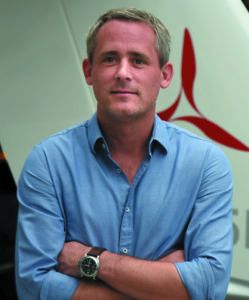
Can the manufacturing process be significantly leaned to increase margins?
Yes, it can, and that’s obviously one of our top priorities, and for potential new products as well. Conceptually, we’re having a lot of new ideas and there are a lot of lessons learned that can go into new products. But in the existing A5, we’re trying to do a lot of reverse engineering to make the product more manufacturable without compromising quality.
It’s really highly volume dependent. So cutting down volume is putting on the brakes a little because there’s a scaling effect. But there’s a lot of low-hanging fruit that we’ll be able to cut down in the next year and half, I’d say. I’m sure this will be helping us to improve significantly.
Icon Training: Focus On AoA
Among a host of factors that drove the Icon A5’s design, two stand out and they’re related. Icon sought to limit its tort liability exposure through a restrictive buyer’s agreement that also requires a customer to complete Icon-approved training as a condition of sale.
When Icon proposed its first buyer’s contract, it was widely seen as draconian and the company immediately retrenched. But the current contract still requires a hold-harmless agreement and tacks on an extra $10,000 if the buyer wants to retain the right to sue.
It also requires an owner to notify the company in writing before selling the airplane and/ or to ensure that the secondary owner has also executed the hold-harmless contract with Icon. Failure to do that authorizes Icon to pursue a $5000 penalty from the first owner.
Whether this has had a chilling effect on would-be buyers is unknown, although Icon says price escalations have definitely eroded the original depositors list. But buyers who hang in—whether new to aviation or transitioning from other aircraft—are still impacted in the form of training that Icon has carefully shaped to limit its exposure through the expedient of training pilots to assess risk and avoid accidents.
In fact, there are 33 line-item risks in the contract that buyers must initial that they understand and the training addresses these. The program, reviewed for me by Icon’s East Coast director, Warren Curry, and chief pilot Genesah Duffy is, for want of better description, a cutting-edge anachronism.
In an age where panels are festooned with acres of TFT displays, the A5 has little of that and is surprisingly analog. At the top of the pilot’s panel is Icon’s unique angle-of-attack indicator and below that an analog airspeed indicator and analog digital altimeter flanking a small electronic attitude gyro. Engine instruments, the tach and fuel gauge are below that. A word on that fuel gauge: It’s just an analog dial reading directly in gallons. Whoever designed it resisted the urge to lard it up with some new-age dancing bars or worse, a tape.
The same spare philosophy was applied to the AoA which, while a differential pressure sensor and not true AoA, serves the purpose. The indicator is a wing section needle with four calibrations: green for top of cruise, white for approaches, yellow for caution and a yellow zone leading to red. It’s the most intuitive AoA I’ve seen and is integrated into the training from hour one.
Manufacturer-provided training material isn’t a new idea; Cessna did it for years and I imagine others have as well. But Icon’s version is carefully aimed at what I’d call survival aeronautical training combined with the A5’s unique operating environment: low-altitude flying and water operations. All of this is covered in four printed volumes that are well written and well illustrated. Icon also offers a computer-based online interactive version of some of its training materials.
The books hit the AoA concept hard and introduce the idea of total aircraft energy state as a means of understanding where the airplane is in its flight envelope. Airspeed isn’t ignored, but with AoA as the star of the show, it gets the attention.
I was impressed with Icon’s emphasis on the tactile feel of flight. When’s the last time you read a training manual say this: “With a little practice, we can learn to sense our airspeed and AoA using visual, aural and seat-of-the-pants cueing.” And in the first 30 minutes of flying with Genesah Duffy I was doing exactly that, without being told.
Icon declines to say how much money was invested in getting the airplane and company this far, but we know at least $89.5 million was spent. The airplane shows evidence of that kind of expenditure. The one I flew was a recent production version, serial 93, and fit and finish were excellent. From what I could see, the composite work rivaled anything coming out of Europe—or Duluth.
The cockpit ergonomics are automotive comfortable. I was prepared to hate the panel, but the function of the AoA won me over to the extent of ignoring everything else unless it was immediately relevant.
Another temptation Icon ignored was using a sidestick, in the fashion of other airplanes that fancy themselves new-age exemplars for fighter pilot wannabees. The Icon has a proper, perfectly positioned center stick. I found control forces well harmonized and because the split-incidence, stall-resistant wings are loaded up with vortex generators, roll control through the burble and incipient stall is positive.
The airplane is well mannered on the water. The A5’s unique water wings—sponsons by another name—make boarding easy, allow you to egress while stopped on the water and provide so much roll stability that dipping a wing is all but impossible even in aggressive step taxiing.
If I had any wishes for the A5, it would be more power. Compared to a SeaRey or a Carbon Cub on floats, it feels slower off the water and initial climb feels less vigorous. I suspect this is due partially to the A5’s waivered higher weight, at 1510 pounds, with a typical 430-pound useful load.
That higher weight was allowed for the airplane’s heavier, stall-resistant wing. A worthy tradeoff, perhaps, but no free lunch. I was also surprised that it doesn’t have an aural landing gear nag to provide some protection against a gear-down landing on water. Other seaplanes, such as the SeaRey, do have this.
Safety-wise, the A5 fleet has had seven accidents, two fatal. In my view, with just 100 out there, this is too few to judge the airplane fairly. When 300 to 500 are flying, we’ll take another look.
For the short term, the A5 is a well-thought-out airframe, in my view, and appears effectively married to a training program designed to teach pilots solid stickand-rudder flying while avoiding accidents. It’s now up to Icon to prove the A5 can endure in the market and live up to its promise.
This article originally appeared in the October 2019 issue of Aviation Consumer magazine.
For more great content like this, subscribe to Aviation Consumer!


































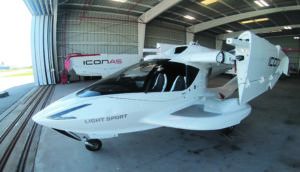
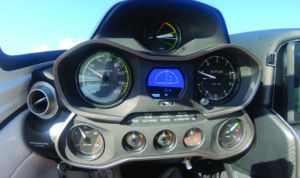
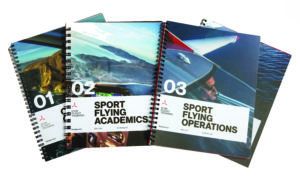

Since it combines the snobbery of a Maserati with the noise/annoyance of a sport motorcycle, then owning one is not going to make you loved by your neighbors. It’s “segment” is the nouveau riche who spend money on what they think that the well-to-do people would spend money on. So yea, flight instructors with full length tattoos won’t make the buyers wince.
“…there are 373 individually laid up carbon-fiber parts.”
“…in the existing A5, we’re trying to do a lot of reverse engineering to make the product more manufacturable without compromising quality.”
Well, not really “reverse” engineering – they already know how it’s built. What they’re doing is RE-engineering, with an emphasis on DFMA (Design for Manufacture and Assembly). Good old Boothroyd-Dewhurst, which works for both large and small lots.
No matter how well you execute a flawed concept – or design – the outcome will be fundamentally flawed.
An should also mean 373 individually re-tested and then 377 individual approved changes by the FAA.
Sorry about the numbers, I should never post when 91.17
I can’t believe I read the whole thing, twice. Donate all to EAA.
the ICON will not sell well until it has some utility. It basically needs to carry two full sized people and stuff and 3 to 4 hours of fuel thus at least 500 lbs of peopl and 4 hours of fuel. then it will be more than a toy for Saturday use in good weather. I think it is well done and attractive but owning and flying a seabee and having experienced its capability, the Seabee carries 4 people and stuff with 4 hours of fuel and most importantly it is able to handle 3 ft waves. There is no way I would spend my money on on an ICON. in addition, at that gross weight it should have at least 150 hp in order to handle the weight and hot conditions.
so to be a salable airplane in volume it needs much more capability than the current regulations allow.
Tell your prospective customers it’s 3D-printed and electric powered. Should result in a spike in interest in the tech-for-tech’s-sake part of the target demographic.
there are serious competitors out there. the super petrel is a really nice aircraft with as good as or better performance at 1/2 the price and for an aircraft that doe the job well and is the low cost leader the Sea Ray is #1 thus the ICON is aimed only at the high end recreational market and that is a very small market.
if they could up the gross weight of the ICON so it could carry two full size people and luggage plus 4 hours of fuel and give it good performance with 150 Hp they would have an aircraft that is worth the price as a small utility amphibian. that is a market where the utility would be proportional to the price.
I agree fully with the comments above. It is a stylish plane with little utility, just a toy for the rich.
In these Corona times, I would be very surprised if they sell a single one, thus the chances that they are still around a year from now are slim.
It’s a new world out there, with drastically different paying rules, where Maserati will probably sell better than the Icon, but not even that is granted.
@Tord E.,
Maserati sells more units in a month that Icon has in its history.
Underpowered. Seaplanes, hmm. They haven’t been exciting since the Schneider cup racers a century ago. Those were real machines. Like the M.C. 72 setting a record of 440mph. Ever since then, seaplanes have been slow, plodding, cumbersome contraptions for the most part. And here’s another example. Probably best suited for getting to fishing locations fast. In the Icon one could stand up and use a casting rod, but where to put the fish… It needs a live well somewhere outside the cockpit.